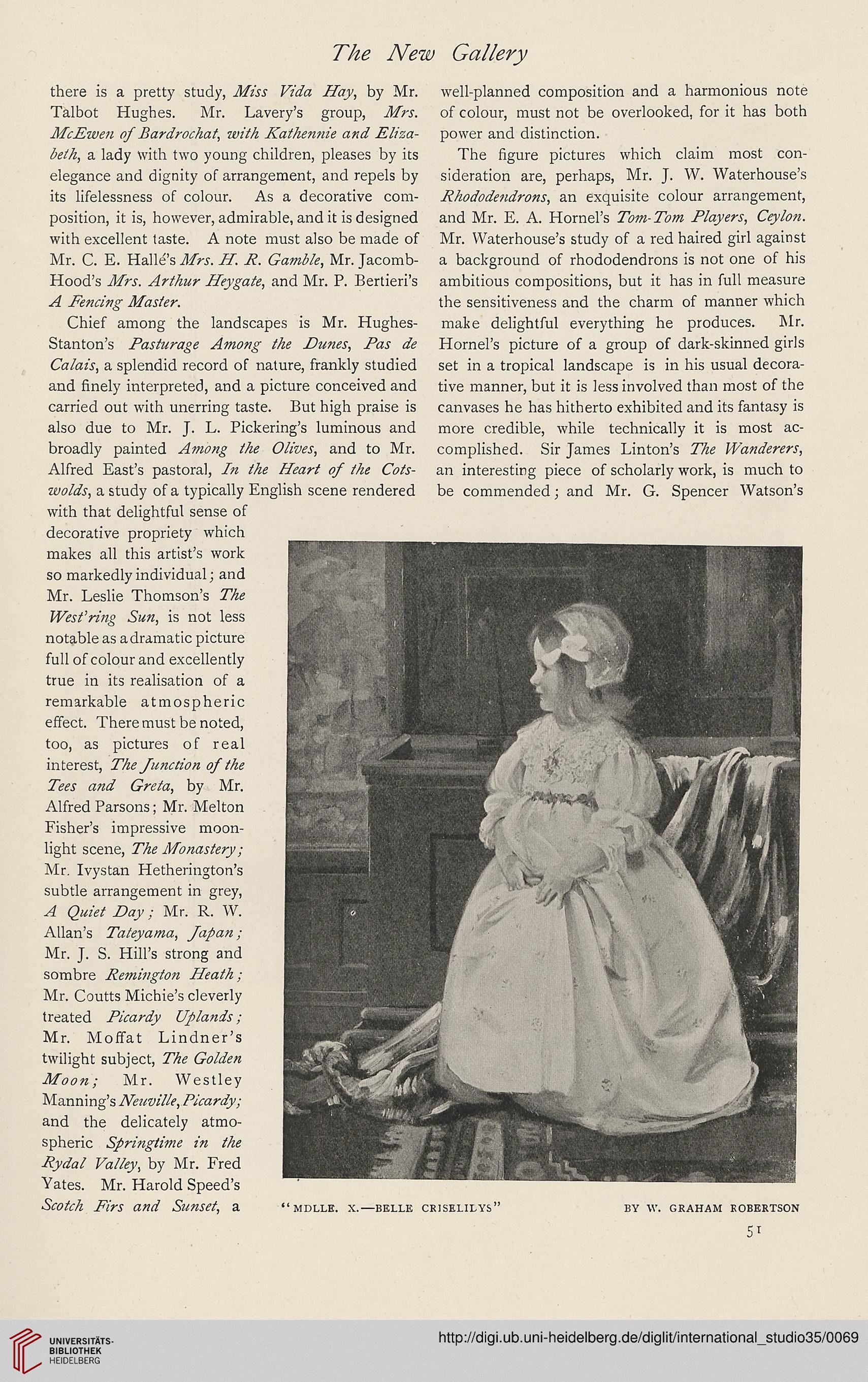The New Gallery
there is a pretty study, Miss Vida Hay, by Mr.
Talbot Hughes. Mr. Lavery’s group, Mrs.
McEwen of Bardrochat, with Kathennie and Eliza-
beth, a lady with two young children, pleases by its
elegance and dignity of arrangement, and repels by
its lifelessness of colour. As a decorative com-
position, it is, however, admirable, and it is designed
with excellent taste. A note must also be made of
Mr. C. E. Halle’s Airs. H. R. Gamble, Mr. Jacomb-
Hood’s Mrs. Arthur Heygate, and Mr. P. Bertieri’s
A Fencing Master.
Chief among the landscapes is Mr. Hughes-
Stanton’s Pasturage Among the Dunes, Pas de
Calais, a splendid record of nature, frankly studied
and finely interpreted, and a picture conceived and
carried out with unerring taste. But high praise is
also due to Mr. J. L. Pickering’s luminous and
broadly painted Among the Olives, and to Mr.
Alfred East’s pastoral, In the Heart of the Cots-
wolds, a study of a typically English scene rendered
with that delightful sense of
decorative propriety which
makes all this artist’s work
so markedly individual; and
Mr. Leslie Thomson’s The
Wesfring Sun, is not less
notable as a dramatic picture
full of colour and excellently
true in its realisation of a
remarkable atmospheric
effect. There must be noted,
too, as pictures of real
interest, The function of the
Tees and Greta, by Mr.
Alfred Parsons; Mr. Melton
Fisher’s impressive moon-
light scene, The Monastery;
Mr. Ivystan Hetherington’s
subtle arrangement in grey,
A Quiet Day; Mr. R. W.
Allan’s Tateyama, fapan;
Mr. J. S. Hill’s strong and
sombre Remington Heath;
Mr. Coutts Michie’s cleverly
treated Picardy Uplands;
Mr. Moffat Lindner’s
twilight subject, The Golden
Moon; Mr. Westley
Manning’s Neuville, Picardy;
and the delicately atmo-
spheric Sprmgtime in the
Rydal Valley, by Mr. Fred
Yates. Mr. Harold Speed’s
Scotch Firs and Sunset, a
well-planned composition and a harmonious note
of colour, must not be overlooked, for it has both
power and distinction.
The figure pictures which claim most con-
sideration are, perhaps, Mr. J. W. Waterhouse’s
Rhododendrons, an exquisite colour arrangement,
and Mr. E. A. Hornel’s Tom-Tom Players, Ceylon.
Mr. Waterhouse’s study of a red haired girl against
a background of rhododendrons is not one of his
ambitious compositions, but it has in full measure
the sensitiveness and the charm of manner which
make delightful everything he produces. Mr.
Hornel’s picture of a group of dark-skinned girls
set in a tropical landscape is in his usual decora-
tive manner, but it is less involved than most of the
canvases he has hitherto exhibited and its fantasy is
more credible, while technically it is most ac-
complished. Sir James Linton’s The Wanderers,
an interesting piece of scholarly work, is much to
be commended; and Mr. G. Spencer Watson’s
BY W. GRAHAM ROBERTSON
MDLLE. X.—BELLE CRISELILYS




